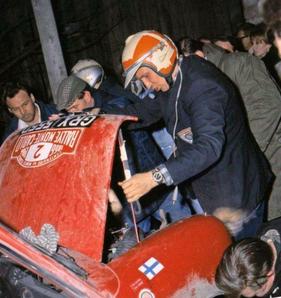Rally Monte Carlo 1966 - "Never again Monte Carlo!"
Summary
The top four in the 1966 Monte Carlo Rally rankings are all disqualified after the finish due to improper lighting. This means that Toivonen, who was actually in fifth place, wins in a Citroën DS 21.
Estimated reading time: 3min
Preview (beginning of the article)
The ranking list is ready for posting in the computer center: 1.) Mäkinen/Easter (BMC Cooper S)2.) Aaltonen/Ambrose (BMC Coooper S)3.) Hopkirk/Liddon (BMC Cooper S)4.) Clark/Melia (Ford Cortina Lotus)5.) Toivonen/Mikander (Citroen DS 21) The stewards take action. Without further ado, they remove the top four from the list. Pauli Toivonen/Ensio Mikander are now at the top. And their car? That's right, a Citroen DS 21. The biggest scandal in the long history of the Monte Carlo Rally became reality. On August 1, 1965, the FIA passed a new law for the whole of motorsport in Paris. Appendix J sets out the regulations for the individual vehicle groups and classes. They came into force shortly before the start of the 1966 Monte Carlo Rally and hardly anyone had time to study them seriously and comply with them down to the last detail - except Citroën, which was able to obtain a copy in good time. For the new DS 21, Citroën easily manages to produce 5,000 units. This means that the DS is considered a Group 1 production touring car. Citroën managers, on the other hand, believe they have to question the homologation of the BMC Minis - on the grounds that Austin and Morris are two different brands and therefore too few Minis have rolled off the assembly line. This is of course not the case, Austin and Morris both belong to the British Motor Corporation and together they produced enough Group 1 Coopers. If Citroën has its way, the Minis belong in Group 2 (special touring cars, 1,000 units per year) and should therefore be penalized with the unfavourable coefficient. This would mean a handicap of 18 percent!
Continue reading this article for free?








